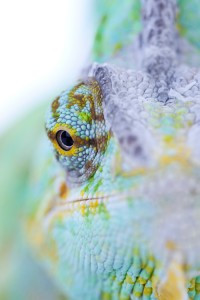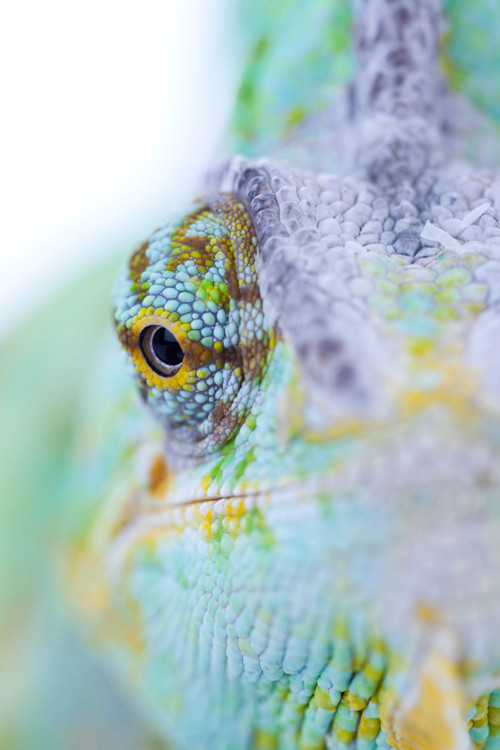Where Do Baby Lizards Come From?
Rebekah Harrison //June 1, 2015//
 Ever wonder how your exotic reptile livestock gets from the breeder to your store? The process is extremely delicate and involves a lot of time and patience. It’s important to know the quality of the reptiles and arachnids that you are providing for customers and hobbyists so you know you can depend on repeat customer visits.
Ever wonder how your exotic reptile livestock gets from the breeder to your store? The process is extremely delicate and involves a lot of time and patience. It’s important to know the quality of the reptiles and arachnids that you are providing for customers and hobbyists so you know you can depend on repeat customer visits.
Scaly Trends
The first step to breeding is identifying the needs of the industry. What are the current reptile trends? What species show dwindled interest?
“Once we identify a customer need, we develop a plan and then we acquire or hold back breeding stock,” said John Mack, owner of Reptiles by Mack.
Actually, buyers can request whatever they need directly from Reptiles by Mack. Then, he can assess if there is need in the market for more of a particular species.
“We try to identify if it’s a one-time thing or an ongoing thing,” said Mack. “We will reach out to other customers and say ‘Hey, if we start producing these, will you have a need for them?’ and then we see if the price point is right.”
According to Mack, after identifying how many reptiles they need for buyers, the team will acquire more breeders. They have to be of a certain standard. The quality of the parents affects the quality of the offspring.
Once the eggs have hatched, the process is far from over. All offspring are raised long enough after hatching to gain weight, strength and size.
“We have to grow those babies out,” said Mack. “And depending on what type of lizard or snake they are, that could be anywhere from a year to five years before we would have viable production coming out of those animals. It’s a very long, slow process.”
Reptiles by Mack has been breeding reptiles since 1985. It is now one of the largest breeding facilities in the world. Located in Xenia, Ohio, the facility can house up to tens of thousands of animals. The company breeds bearded dragons, leopard geckos, ball pythons and so much more. Even within these species, there are a hundred more variations of each.
Part of the breeding process is providing food for all these reptiles.
“We buy in about a million crickets per week,” said Mack. “We produce some of the smaller crickets ourselves, about a million of those too.” Mack must also buy in mice as well.
Reptiles by Mack brings in a few wild-caught species as well and sells the babies that he breeds from them.
“The wild-caught stuff is a renewable resource,” He said. “Customers like that.”
Reptiles by Mack provides animals for both the independent pet stores and the chains. Once the reptiles are viable, it is time to send them to the stores.
“We ship them next day air,” said Mack.
Reptiles by Mack takes a lot of pride in its work.
“Babies aren’t sold until they hit minimum standards,” said Mack. “We want to make sure that they are growing well and feeding well and that they are hearty enough to be shipped and reestablished versus just shipping really young,” said Mack.
Arachnophilia
Michael Jacobi has been breeding spiders since 1982. He has been in the exotic pet business ever since. He is the owner of Michael Jacobi’s Spidershoppe and is the author of “Animal Planet’s Tarantulas.” He really knows his spiders.
“I have been actively breeding tarantulas for 25 or 30 years,” he said.
A lot goes into tarantula breeding. Most people have no idea about the painstaking process that goes behind producing spiderlings (baby spiders). It actually differs greatly from reptile breeding.
“If you’re breeding snakes, once they reach maturity, you’ve got a certain number of years where you can pair a male and female and they have a reproductive life that is fairly long,” said Jacobi. “It’s totally different in spiders, specifically in tarantulas to where a male is only able to breed at the end of his life.”
After mating, males usually wither away and die.
“Sometimes a female makes them into a meal to contribute to the offspring.”
So being a tarantula breeder, Jacobi has to have timing down to a tee. Due to the time constraints, tarantula breeding can even become cooperative.
“People will have a male but they won’t have a female,” said Jacobi. “So they will ship you their male and you’ll become like 50-50 partners.”
According to Jacobi, when a male is mature and has all his sexual organs, they are easily identifiable by their pedipalps.
“If you look at a picture of a tarantula, those two short legs in the front aren’t actually legs, they are pedipalps,” he said. “So when a male has his maturing molt, all of a sudden, his pedipalps change dramatically.”
According to Jacobi, the males start to look like they are have boxing gloves, or hooks in some species, on their pedipalps.
“These help him prop up the female and keep her out of harm’s way,” he said. “He builds a sperm web, a special silk lean-to tent using silk glands that the females don’t have and then he will deposit his sperm packet into the female using the ends of his pedipalps.”
The female then holds onto the sperm sack to deposit onto her egg sack.
Now that Jacobi is focused purely on spider breeding, he is able to do so in one room of his own home. He is also able to keep tarantulas unattended while he travels. He actually has a couple thousand tarantulas.
“That’s pretty much the process,” he said. “It’s the matter of getting mature males of the species and having a female who is also at the right point.”
Males aren’t the only ones that must have impeccable timing. Females must be closely monitored as well.
“Tarantulas grow by completely molting their exoskeleton,” said Jacobi. “It looks like a hollow tarantula. It looks like there’s two tarantulas in the cage now.”
Therefore, if the female sheds after the male has deposited his sperm, she has now sterilized herself because she has shed his sperm.
“There’s a time in her cycle that you need to pair them together so it becomes even more of a timing issue,” said Jacobi.
Now, Jacobi has females he is trying to grow quickly and males he is trying to grow slowly. He has a cooler area for males that he feeds once a month and a warmer area for females that are in growth and being fed a couple times a week.
“It’s a timing game,” he said.
Once the spiderlings have hatched, Jacobi sells them to retailers.
“I’ve been doing this for 30 years and I have grown tired of the retail market so I sell mostly wholesale for other people to retail,” he said.
Some of Jacobi’s spiders produce 200 offspring from one mating.
“It’s a seven day a week, full-time job for me to feed little bugs to bigger bugs,” he said.
So if you’re busy with your retail store, it’s best to leave the breeding to the professionals. But it’s still nice to know where the animals come from.



















